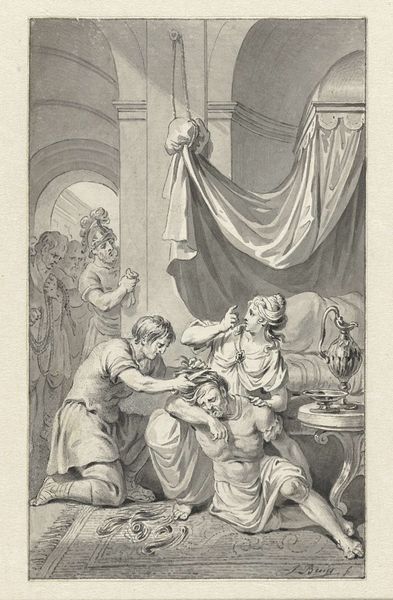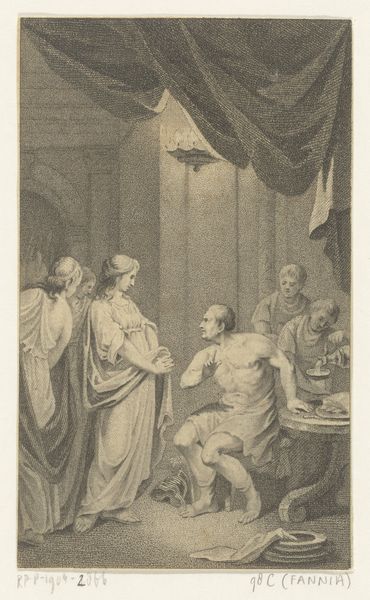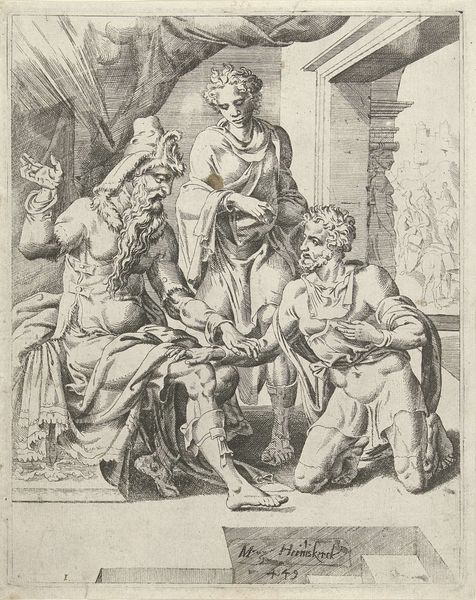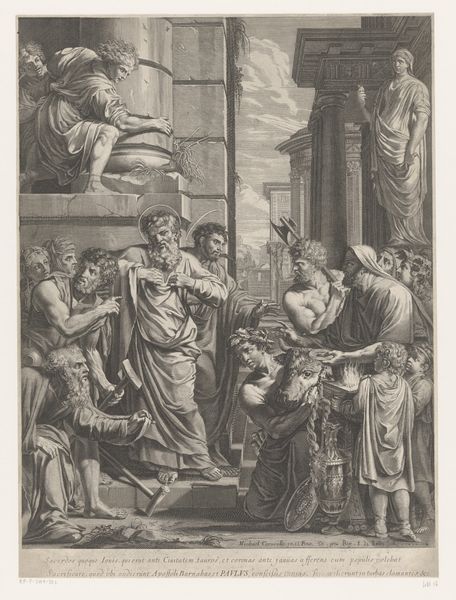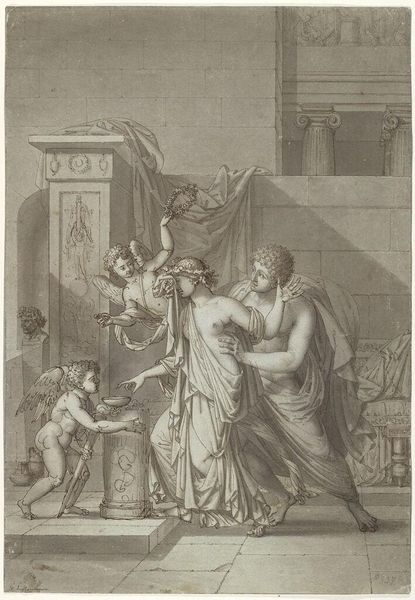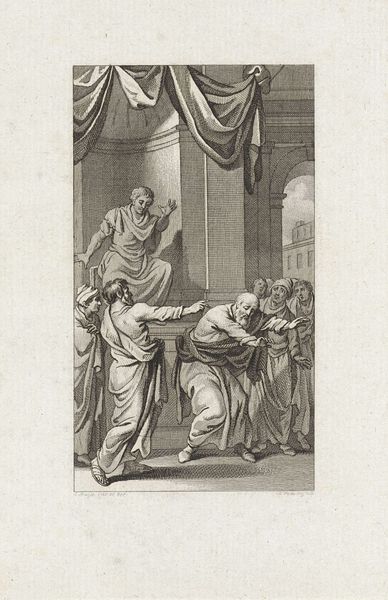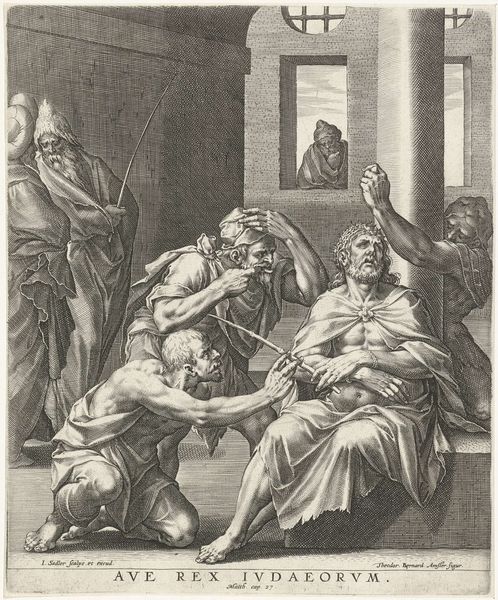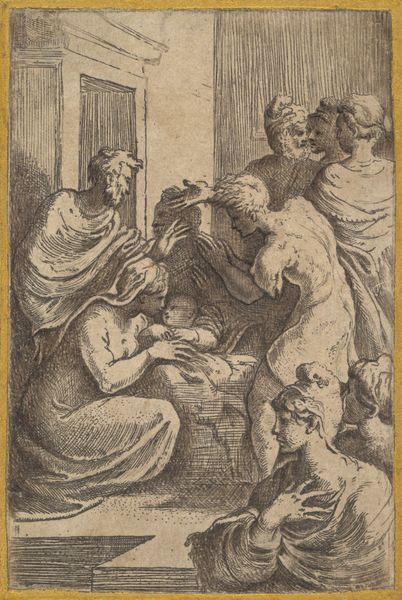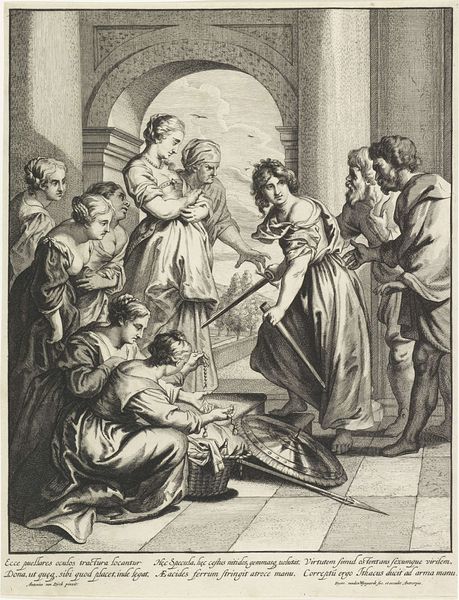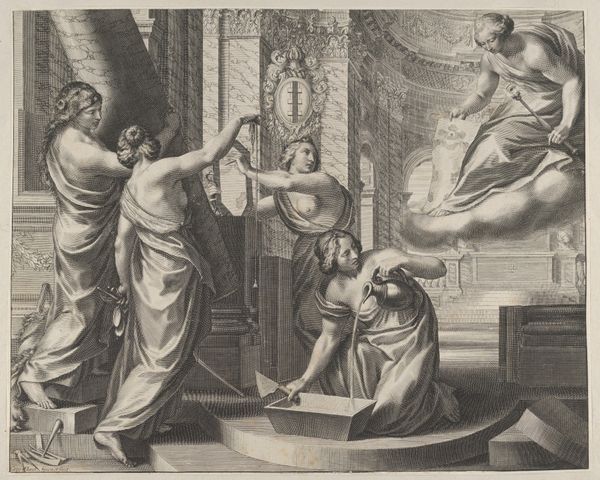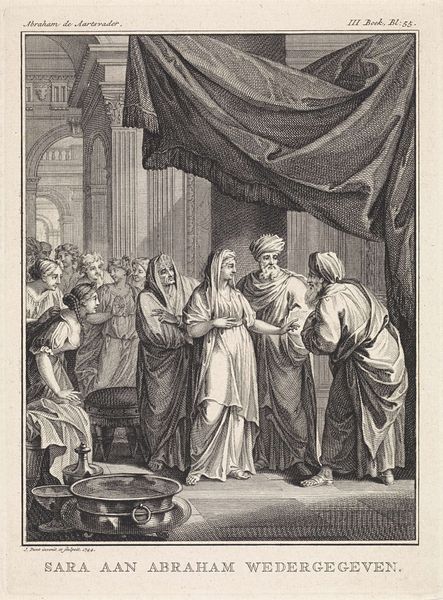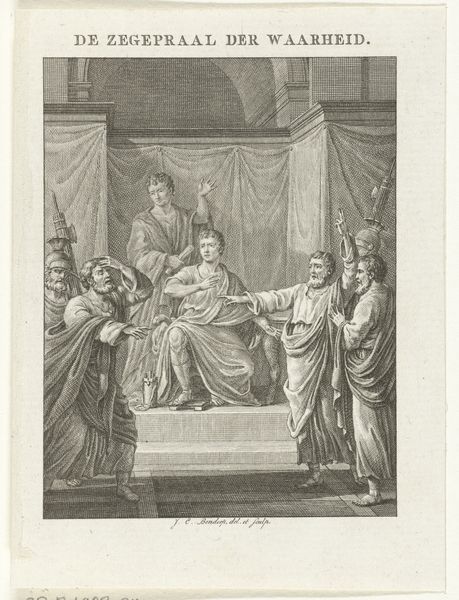
drawing, paper, ink, engraving
#
drawing
#
neoclacissism
#
medieval
#
narrative-art
#
figuration
#
paper
#
ink
#
history-painting
#
engraving
Dimensions: height 135 mm, width 85 mm
Copyright: Rijks Museum: Open Domain
Editor: Here we have Reinier Vinkeles' 1804 ink and paper work, "The Suicide of Seneca and his Wife," currently held at the Rijksmuseum. There’s a strange stillness despite the implied action. It’s like a stage set, almost. What aspects of this piece grab your attention? Curator: The emphasis on material process is key here. Look at the precise lines achieved through engraving; ink meticulously applied to paper to depict a specific narrative. This reproductive process makes Seneca’s story available, a commodity consumed by the viewer. It highlights how even supposedly high-minded subjects become part of a larger cycle of production and consumption. Editor: So, the value isn't just in the image, but in the act of making and distributing it? Curator: Precisely. The creation of this print, intended for a mass audience, brings into question the very notion of singular artistic genius. We must consider who commissioned this work, and for what purpose? This informs the reception of Neoclassical ideals among various social strata, shifting away from sole appreciation of aesthetics towards acknowledging broader production contexts. Editor: That's a different angle than I was expecting. How does this perspective change the way we interpret the emotional weight of the scene itself? Curator: The emotional weight becomes secondary to the analysis of production and consumption. Are we moved by Seneca's plight, or are we simply consuming a stylized image of suffering, divorced from real consequence through the mechanics of printmaking? Editor: I see…so, the focus shifts from the tragic narrative to how that narrative becomes a tangible object with its own cultural life. Curator: Indeed. Understanding the labor and resources embedded in this print offers insights into how artistic value itself is constructed. Editor: Well, I will definitely be looking at engravings, and all art really, with a different lens now. Curator: As will I! Thanks to your perceptive eye for the overall stage setting, which made it easy to investigate its elements, and broader function in society!
Comments
No comments
Be the first to comment and join the conversation on the ultimate creative platform.
